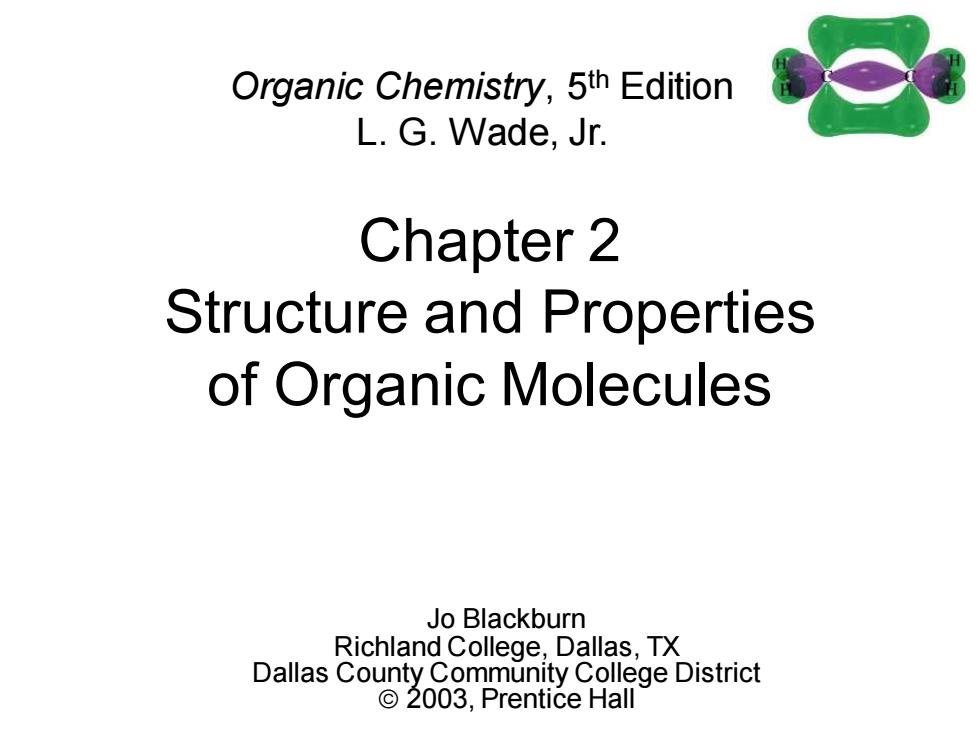
Organic Chemistry,5th Edition L.G.Wade,Jr. Chapter 2 Structure and Properties of Organic Molecules Jo Blackburn Richland College,Dallas,TX Dallas County Community College District ©20o3,Prentice Hall
Chapter 2 Structure and Properties of Organic Molecules Organic Chemistry, 5th Edition L. G. Wade, Jr. Jo Blackburn Richland College, Dallas, TX Dallas County Community College District © 2003, Prentice Hall

Wave Properties of Electrons Standing wave vibrates in fixed location. Wave function,y,mathematical description of size,shape,orientation Amplitude may be positive or negative Node:amplitude is zero > the 2p,orbital Chapter 2
Chapter 2 2 Wave Properties of Electrons • Standing wave vibrates in fixed location. • Wave function, , mathematical description of size, shape, orientation • Amplitude may be positive or negative • Node: amplitude is zero + _ + - =>
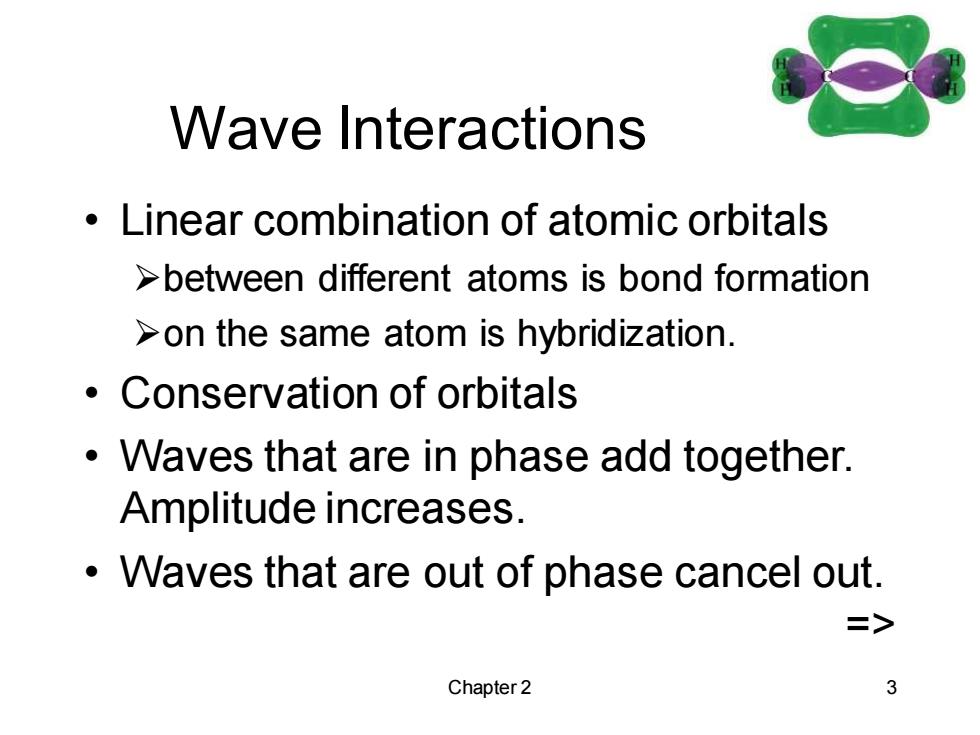
Wave Interactions Linear combination of atomic orbitals >between different atoms is bond formation >on the same atom is hybridization. Conservation of orbitals Waves that are in phase add together. Amplitude increases. Waves that are out of phase cancel out. > Chapter 2 3
Chapter 2 3 Wave Interactions • Linear combination of atomic orbitals ➢between different atoms is bond formation ➢on the same atom is hybridization. • Conservation of orbitals • Waves that are in phase add together. Amplitude increases. • Waves that are out of phase cancel out. =>
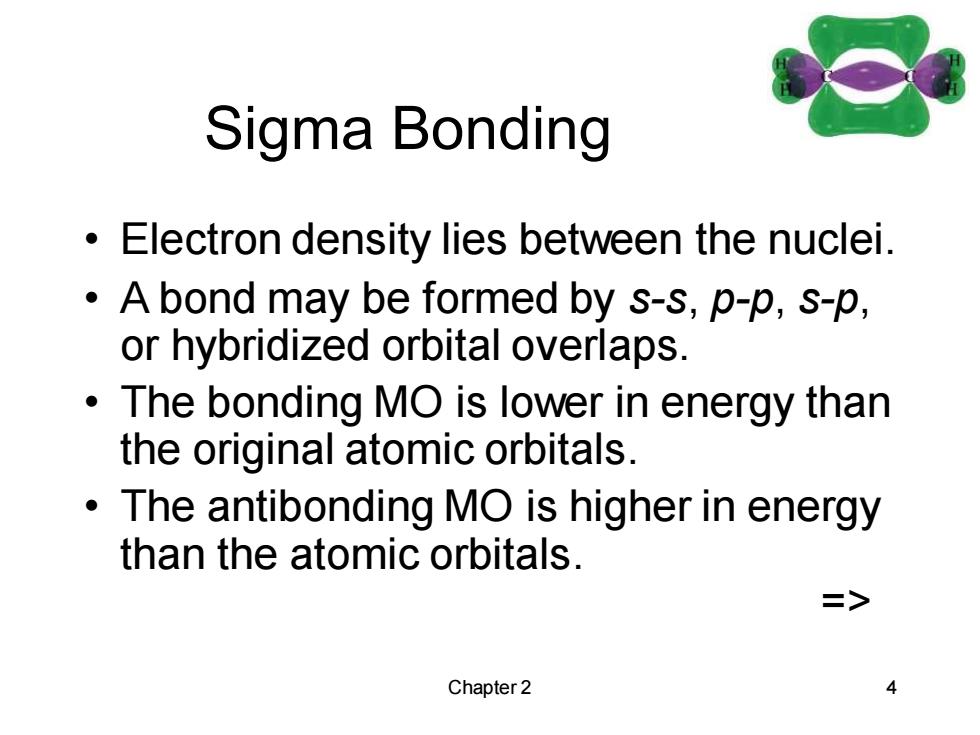
Sigma Bonding Electron density lies between the nuclei. A bond may be formed by s-s,p-p,s-p, or hybridized orbital overlaps. The bonding MO is lower in energy than the original atomic orbitals. The antibonding MO is higher in energy than the atomic orbitals. => Chapter 2 4
Chapter 2 4 Sigma Bonding • Electron density lies between the nuclei. • A bond may be formed by s-s, p-p, s-p, or hybridized orbital overlaps. • The bonding MO is lower in energy than the original atomic orbitals. • The antibonding MO is higher in energy than the atomic orbitals. =>
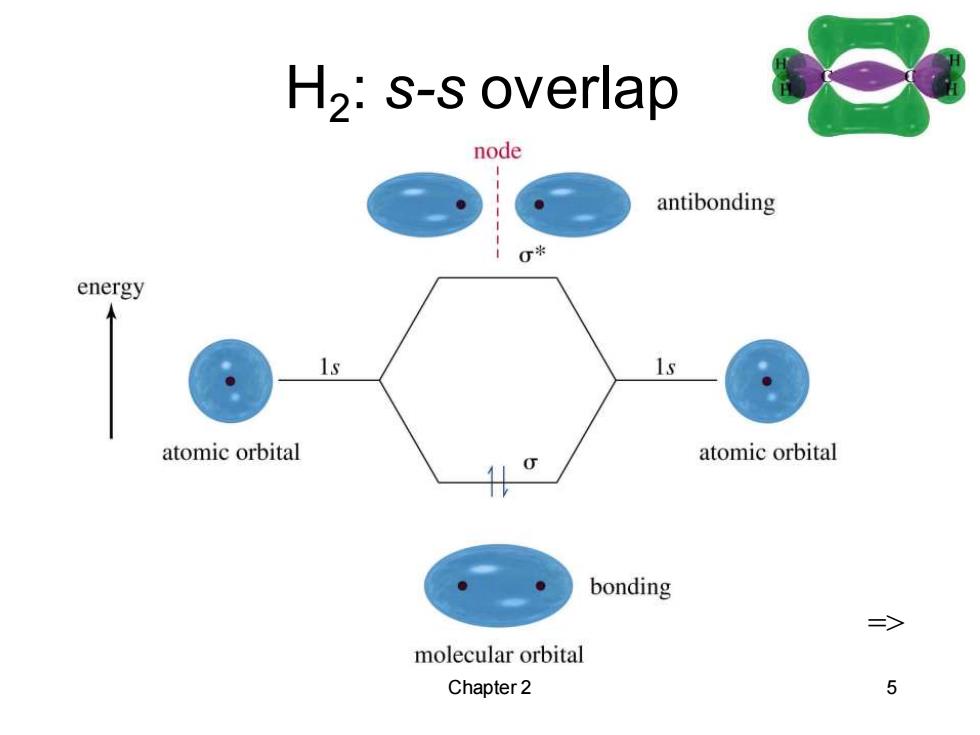
H2:s-s overlap node antibonding 0米 energy atomic orbital atomic orbital bonding => molecular orbital Chapter 2 5
Chapter 2 5 H2 : s-s overlap =>
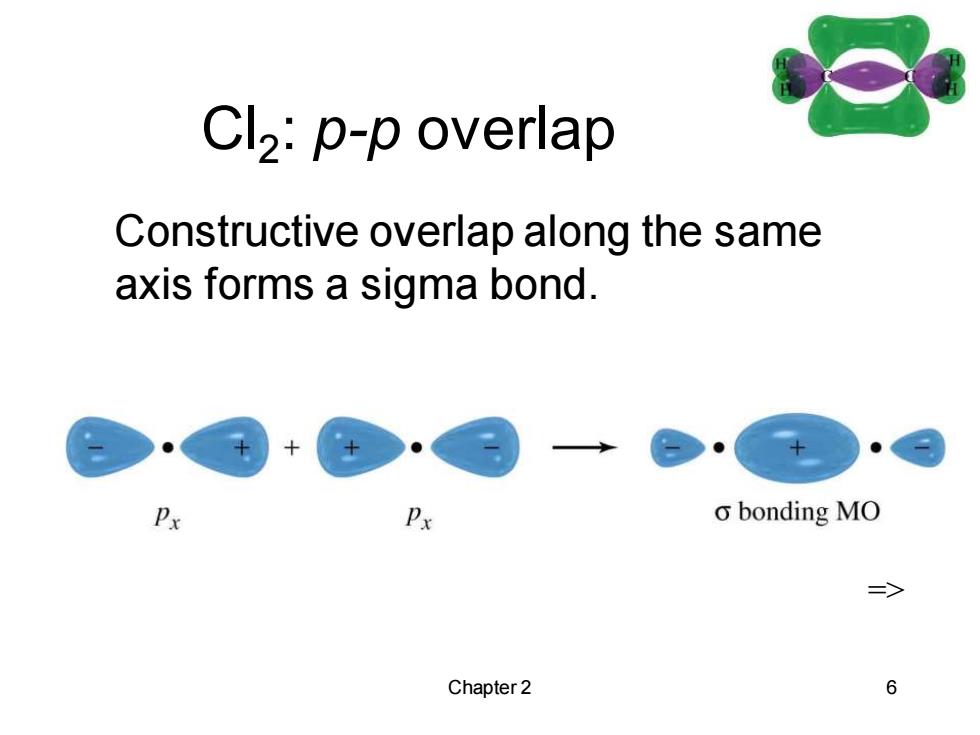
Cl2:p-p overlap Constructive overlap along the same axis forms a sigma bond. Px o bonding MO Chapter 2 6
Chapter 2 6 Cl2 : p-p overlap => Constructive overlap along the same axis forms a sigma bond
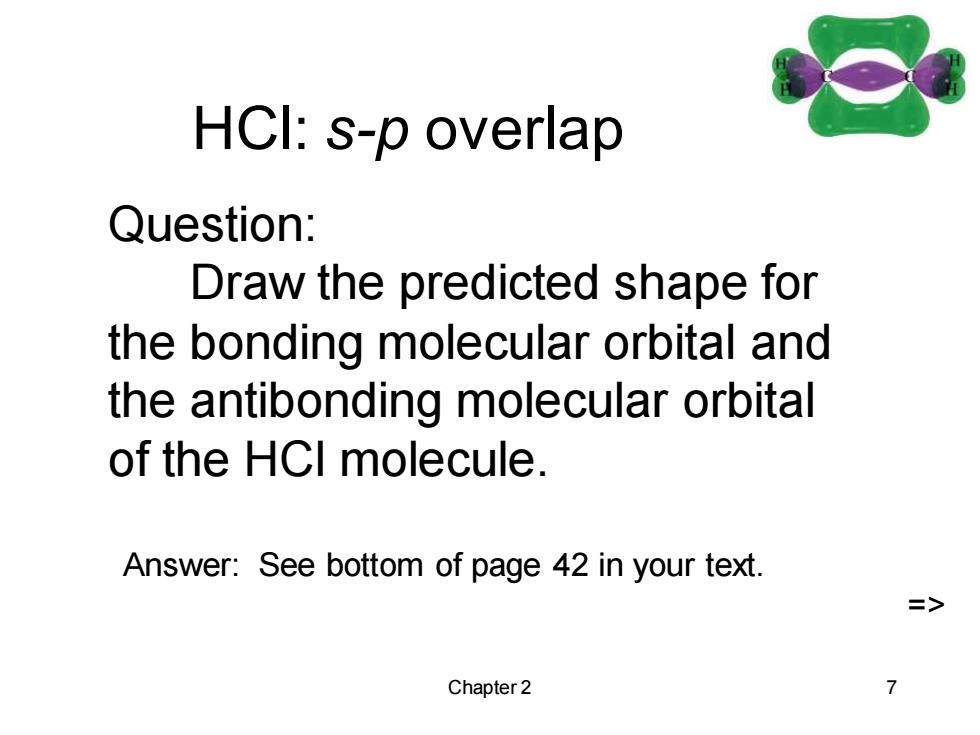
HCI:s-p overlap Question: Draw the predicted shape for the bonding molecular orbital and the antibonding molecular orbital of the HCI molecule. Answer:See bottom of page 42 in your text. => Chapter 2 7
Chapter 2 7 HCl: s-p overlap Question: Draw the predicted shape for the bonding molecular orbital and the antibonding molecular orbital of the HCl molecule. Answer: See bottom of page 42 in your text. =>
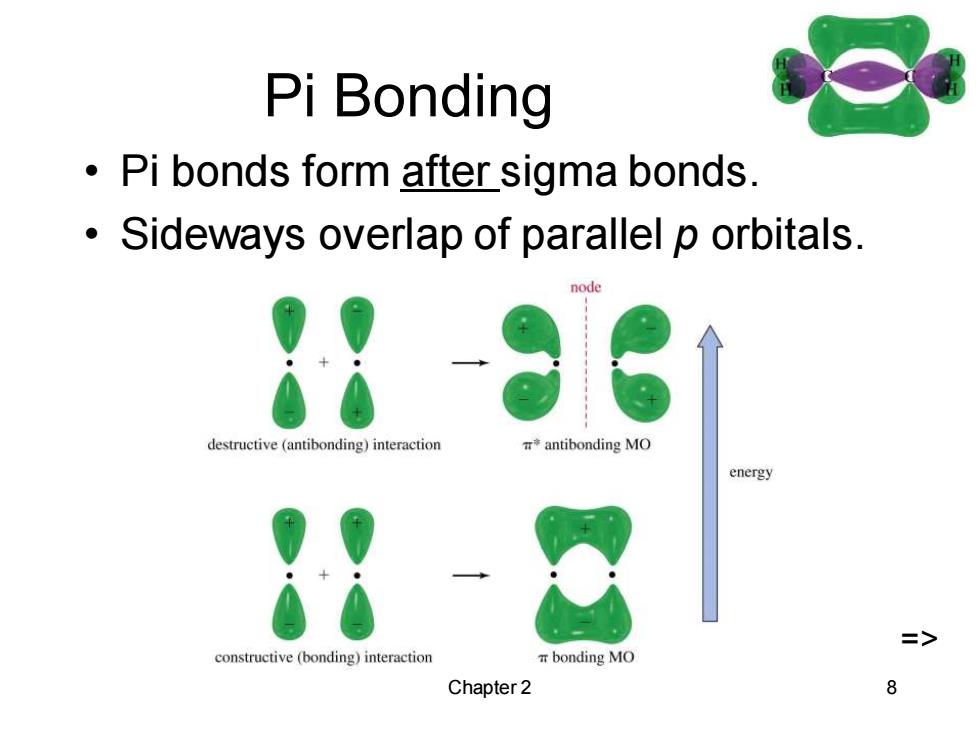
Pi Bonding Pi bonds form after sigma bonds. Sideways overlap of parallel p orbitals. node destructive (antibonding)interaction *antibonding MO energy constructive (bonding)interaction a bonding MO Chapter 2
Chapter 2 8 Pi Bonding • Pi bonds form after sigma bonds. • Sideways overlap of parallel p orbitals. =>
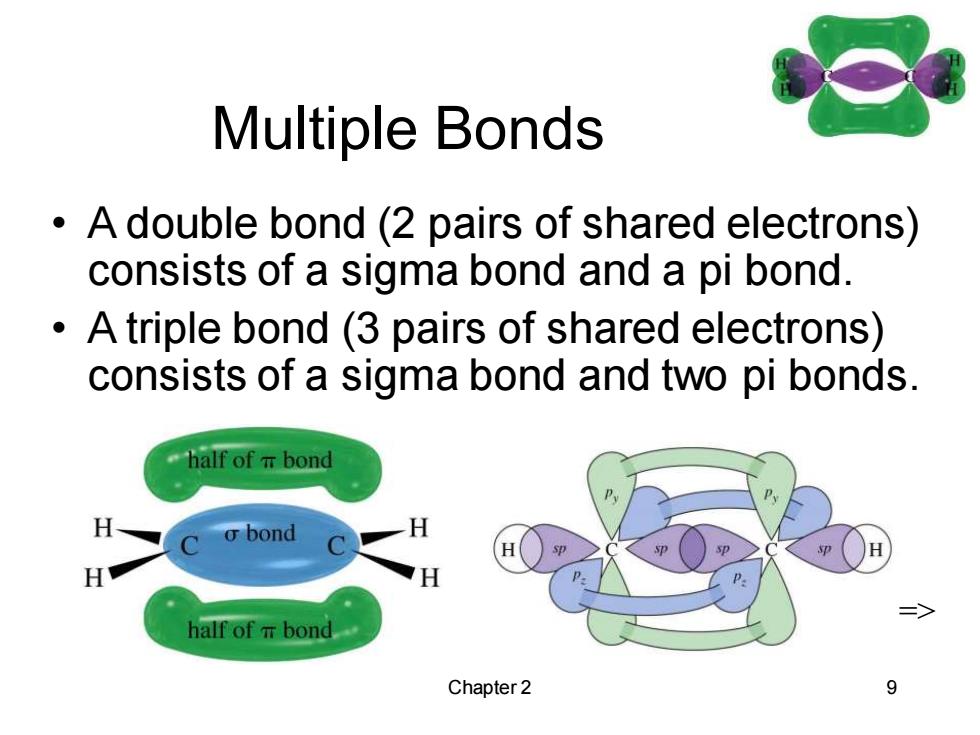
Multiple Bonds A double bond (2 pairs of shared electrons) consists of a sigma bond and a pi bond. A triple bond (3 pairs of shared electrons) consists of a sigma bond and two pi bonds. half of T bond C o bond H H H half of T bond Chapter 2 9
Chapter 2 9 Multiple Bonds • A double bond (2 pairs of shared electrons) consists of a sigma bond and a pi bond. • A triple bond (3 pairs of shared electrons) consists of a sigma bond and two pi bonds. =>
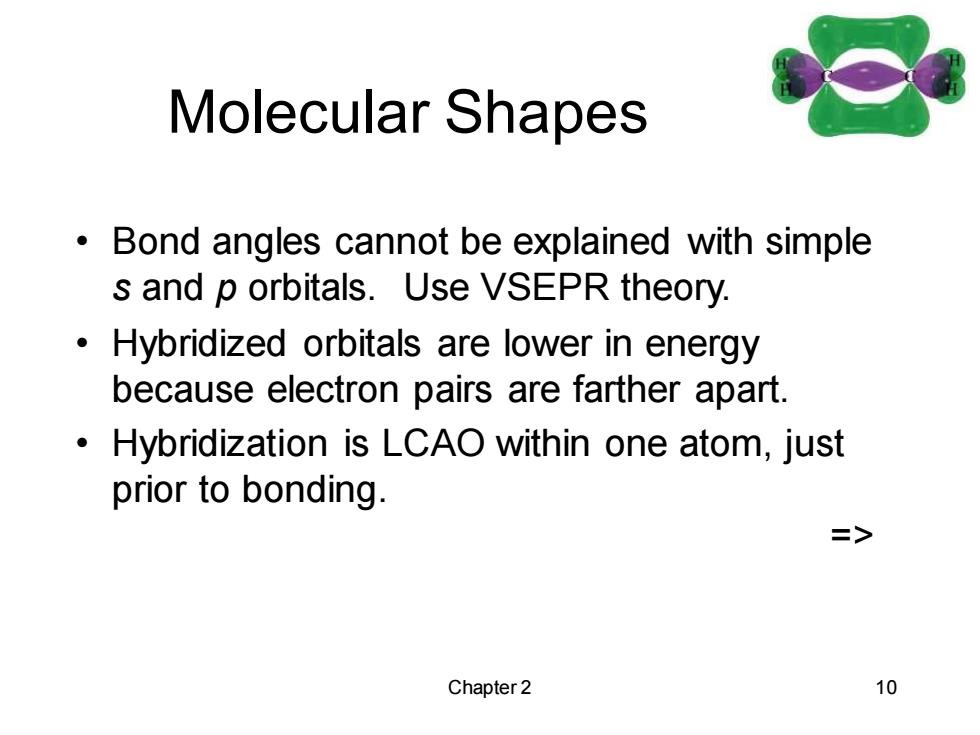
Molecular Shapes Bond angles cannot be explained with simple s and p orbitals.Use VSEPR theory. Hybridized orbitals are lower in energy because electron pairs are farther apart. Hybridization is LCAO within one atom,just prior to bonding. => Chapter 2 10
Chapter 2 10 Molecular Shapes • Bond angles cannot be explained with simple s and p orbitals. Use VSEPR theory. • Hybridized orbitals are lower in energy because electron pairs are farther apart. • Hybridization is LCAO within one atom, just prior to bonding. =>